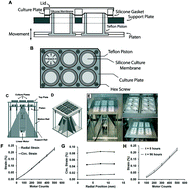A novel system for studying mechanical strain waveform-dependent responses in vascular smooth muscle cells
Abstract
While many studies have examined the effects mechanical forces on vSMCs, there is a limited understanding of how the different arterial strain waveforms that occur in disease and different vascular beds alter vSMC mechanotransduction and phenotype. Here, we present a novel system for applying complex, time-varying strain waveforms to cultured cells and use this system to understand how these waveforms can alter vSMC phenotype and signaling. We have developed a highly adaptable cell culture system that allows the application of mechanical strain to cells in culture and can reproduce the complex dynamic mechanical environment experienced by arterial cells in the body. Using this system, we examined whether the type of applied strain waveform altered phenotypic modulation of vSMCs by mechanical forces. Cells exposed to the brachial waveform had increased phosphorylation of AKT, EGR-1, c-Fos expression and cytoskeletal remodeling in comparison to cells treated with the aortic waveform. In addition, vSMCs exposed to physiological waveforms had adopted a more differentiated phenotype in comparison to those treated with static or sinusoidal cyclic strain, with increased expression of vSMC markers desmin, calponin and SM-22 as well as increased expression of regulatory miRNAs including miR-143, -145 and -221. Taken together, our studies demonstrate the development of a novel system for applying complex, time-varying mechanical forces to cells in culture. In addition, we have shown that physiological strain waveforms have powerful effects on vSMC phenotype.


 Please wait while we load your content...
Please wait while we load your content...